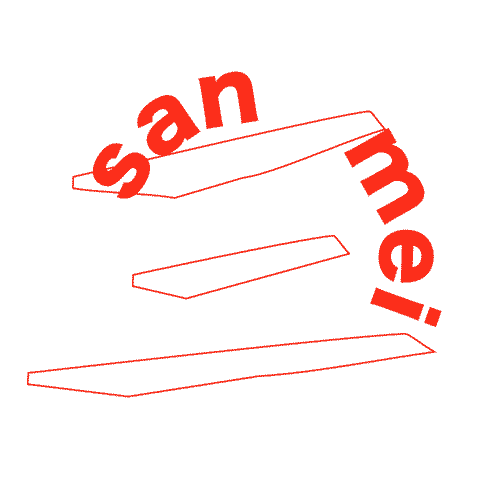Sonic Archetypes:
Hollie Miller, Craig Scott
Online from 15 July
The skin may be an organ but what if it is also our history? In fact, what if our means for understanding our being is based in a process of shedding our ancestral skins, re-routing our body in time and place, asking ourselves to remain ephemeral and fluid? Hollie Miller and Craig Scott’s collaborative experimentation into sound and performance suggested such strategies.
Developed for the unique space of San Mei Gallery, Scott’s robotic diy instruments, whirred and stimulated a scenographic setting, a kind of elusive soundscape built on a rhythmic implementation of sounds that felt natural, organic. Miller used these sounds as the atmosphere for her precise bodily movements. Entering the space wearing a snakeskin bodysuit, Miller contorted her body accentuating the limits and bounds of what she could do with each move. At times it bordered on dance, but was unnatural, un-strategized, resisting choreographic intention in favour of feel, as though she were bending her body to fit the space, to find space, and, as became apparent, remove her skin. As the performance progressed Miller passed through three skins. Changing from snake, to humanoid, to golden spirit. Each change replying to the rhythms of Scott’s sounds, with new questions for the body. As snake, she resisted. As humanoid, draped in hair, she touched. And as golden spirit she transformed. Each skin came with its own bodily gestures, the fluidity of the snake, moving into the mechanics of the human, subtle, tidy gestures, before the golden spirit floated, seemingly gracing the floor without touching it.
Miller’s ability to shapeshift, to peel away and re-emerge had me reconsidering the necessity of my skin. It was strange to feel so lost and misplaced, as the sounds built up their environment, we watched something that searched for cultures lost. If this was a ritual I was not informed. But I began to remember stories of ancient bodies of transmutation, beings who could transform from animal to human and back, I wondered if Miller and Scott had planned for me to see them, if they considered these mythological figures to be still alive. Was Miller trying to become one? Was she performing the ritual that would allow her to become anthropomorphic? And what is role of the skin in all this, what can be done with the skin, and the hair that covers the skin. All the while Scott’s instruments filtered and toyed with a variety of sounds. We sat contemplating our relation to the body, whilst Scott was able to conjure up relations between technology old and new, and himself, binding the systematic controls of the robotic into something equally as organic and fundamental.
Treated as material, Miller’s body and Scott’s sonic interventions became soft, her movements felt as though she were undoing habits, removing behaviours, and finding behaviours that she did not know, all the while immersing the body into the environment of the sounds, where one asked the other replied. Slow steps met by a whirring. A stern face replied with a thud. The golden mask raised up in preparation for a cacophony of the natural world.
As I sat there considering the skin, wondering if my skin was falling onto the surface of the floor, which had become part of the world of surfaces available for Miller’s body, in ways it was not to mine, I was made aware of the habits I form with my body, and the sounds they make. The small gestures I repeat that present some part of my being into space. And after being in isolation, away from others, I remembered what it was to be a body presenting itself to other bodies. Miller and Scott were the guides to our reconnection to our sense of body. The passing between skins, and the passing between temporal beings, was merely the means for allowing us to remember. And what a pleasure and luxury it is to be able to remember. The habits we form might just be the gestures we need to allow our bodies to say, remember when, remember how. All this trapped in the skin. All these histories, intergenerational messages, based in the texture of our skins, which may shed, and peel, but never remove themselves, never stop protecting us, and never fail to tell our story.
We hesitate to accept the power of this, but we must, Miller and Scott’s work was a reminder to remain connected to our body, to our history, to our memory and to stay open to the possibility of change.
Text by Joshua Leon
Joshua Leon (b. 1990) is a writer and visual artist from London. His practice positions himself at the intersections of literature, performance and exhibition making. Whilst his research is invested in understanding notions of authenticity and lament.
